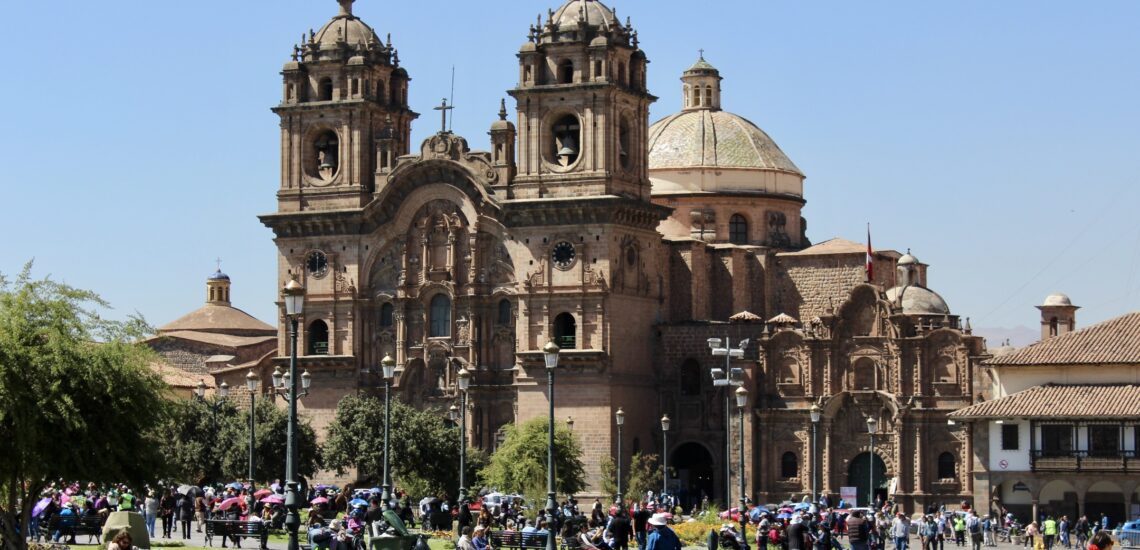10 Interesting Facts About Peru
Quick facts about Peru:
- Population: Approximately 34 million people.
- Capital: Lima.
- Official Language: Spanish, Quechua, and Aymara.
- Currency: Peruvian Sol (PEN).
- Government: Unitary presidential republic.
- Major Religion: Roman Catholicism.
- Geography: Situated on the western coast of South America, Peru is known for its diverse landscapes, including the Andes Mountains, Amazon Rainforest, and coastal deserts, covering an area of approximately 1.3 million square kilometers.
Fact 1: Machu Picchu is one of the new wonders of the world
Machu Picchu, nestled amidst the mist-shrouded peaks of the Andes Mountains in Peru, stands as a testament to the ingenuity and architectural prowess of the ancient Inca civilization. This UNESCO World Heritage site, designated as one of the New Seven Wonders of the World, captivates visitors with its enigmatic ruins, intricate stone structures, and breathtaking natural surroundings. Built in the 15th century and abandoned shortly thereafter, Machu Picchu remained hidden from the outside world until its rediscovery by American explorer Hiram Bingham in 1911. Today, it stands as a symbol of Peru’s rich cultural heritage and serves as a pilgrimage site for travelers seeking to unravel the mysteries of this ancient citadel while marveling at its awe-inspiring beauty and historical significance.
 Zielonamapa.pl, CC BY-SA 2.0, via Wikimedia Common
Zielonamapa.pl, CC BY-SA 2.0, via Wikimedia CommonFact 2: One of the longest tributaries of the Amazon begins in Peru
The Marañón River, one of the longest tributaries of the Amazon River, originates in Peru. Rising from the snow-capped peaks of the Andes Mountains in the Peruvian region of Ancash, the Marañón River travels approximately 1,600 kilometers northwestward through the Peruvian Andes before joining with the Ucayali River near the city of Nauta. From there, the combined waters form the Amazon River, which continues its journey through the vast Amazon rainforest until it reaches the Atlantic Ocean. The Marañón River plays a crucial role in the hydrology of the Amazon basin, contributing significantly to the overall flow of the Amazon River system.
Fact 3: The national poncho garment has a very long history
Dating back to pre-Columbian times, ponchos were worn by indigenous peoples across the Andean region, including the Incas and their predecessors. These garments served practical purposes such as providing warmth in the chilly mountain climates and protection from the elements.
Ponchos also held symbolic significance, representing social status, cultural identity, and craftsmanship. They were often intricately woven or decorated with elaborate designs and patterns that conveyed meaning and reflected the wearer’s community, traditions, and beliefs.
Today, the poncho remains an integral part of Peruvian culture, worn by both men and women during traditional ceremonies, festivals, and everyday life.

Fact 4: Spanish conquistadors often built new buildings on top of old Indian buildings
Spanish conquistadors, upon arriving in the Americas, often repurposed or built new structures atop existing indigenous buildings, particularly in areas where they sought to establish their own settlements or exert control over local populations. This practice served various purposes, including asserting dominance over indigenous cultures, repurposing existing infrastructure for Spanish use, and symbolizing the transfer of power from indigenous rulers to Spanish colonial authorities.
In many cases, Spanish conquistadors utilized the labor of indigenous peoples to construct new buildings or modify existing ones according to Spanish architectural styles. This resulted in a blending of indigenous and European architectural influences, evident in the design and construction of colonial-era buildings throughout Latin America.
Fact 5: 80% of the world’s alpacas are found in Peru
Peru is home to a significant portion of the world’s alpaca population, with estimates suggesting that around 80% of the global alpaca population resides in Peru. These domesticated South American camelids are primarily raised in the high-altitude regions of the Peruvian Andes, where they have been bred for their prized wool for centuries. Alpacas play a vital role in the cultural, economic, and social fabric of Andean communities in Peru, where they are valued for their wool, meat, and role in traditional rituals and ceremonies.

Fact 6: Peru has preserved many indigenous languages
It is estimated that Peru is home to over 47 indigenous languages, with Quechua and Aymara being among the most widely spoken.
The Peruvian government has taken steps to protect and promote indigenous languages through legislation and educational initiatives. In 1975, Peru recognized Quechua and Aymara as official languages alongside Spanish, granting them official status in regions where they are spoken widely. Additionally, efforts have been made to incorporate indigenous languages into educational curricula and to support indigenous communities in preserving their linguistic heritage.
Despite these efforts, many indigenous languages in Peru are considered endangered due to factors such as urbanization, globalization, and the dominance of Spanish as the primary language of education and commerce.
Fact 7: There is a place in Peru where salt has been mined in the same way since ancient times
The Maras Salt Ponds, situated in the Sacred Valley of the Incas near the town of Maras in Peru, showcase ancient salt mining techniques that have persisted for millennia. These salt ponds, locally known as “salineras,” comprise around 3,000 small terraced pools meticulously carved into the mountainside.
Utilizing a method unchanged since pre-Columbian times, salty spring water flows into the ponds through a network of channels. As the water evaporates under the intense Andean sun, crystallized salt forms on the surface of the pools. Workers, often members of local communities, carefully harvest the salt by hand, a process that involves raking the salt crystals and redistributing them across the terraced pools.
This traditional salt extraction method not only preserves the cultural heritage of the region but also sustains the livelihoods of local families. Each year, the Maras Salt Ponds produce approximately 160,000 metric tons of salt, which is valued for its purity and utilized in various culinary and industrial applications both domestically and abroad.

Fact 8: Pink dolphins can be seen in Peru
These distinctive freshwater dolphins are native to the Amazon Basin, including the rivers of Peru, such as the Amazon, Ucayali, and Marañón rivers.
The pink coloration of these dolphins is most noticeable when they are young and fades as they age, resulting in a pinkish-gray or even grayish coloration in adults. Pink dolphins are known for their friendly and curious behavior, often approaching boats and swimmers.
Encountering pink dolphins in their natural habitat is a unique and memorable experience for visitors to the Amazon region of Peru, offering an opportunity to observe these fascinating creatures up close and learn about their ecology and conservation status.
Fact 9: Peru has a “White City” built out of volcanic rock
Arequipa, known as the “White City” (Ciudad Blanca) due to its many buildings constructed from white volcanic rock called sillar, is one of Peru’s most iconic cities. Situated in the Andean region of southern Peru, Arequipa boasts a stunning architectural landscape characterized by colonial-era structures crafted from sillar, a type of volcanic ash stone.
The historic center of Arequipa, designated a UNESCO World Heritage Site, features numerous well-preserved colonial buildings, including churches, monasteries, and mansions, all constructed with the distinctive white volcanic rock. The use of sillar gives the city a striking appearance, especially when illuminated by sunlight, earning it the moniker of the “White City.”
Note: If you plan to visit the country, find out if you need an International Driver’s License in Peru to drive.
 Afther Mather, CC BY-SA 4.0, via Wikimedia Commons
Afther Mather, CC BY-SA 4.0, via Wikimedia CommonsFact 10: The highest navigable lake is located in Peru
Lake Titicaca, located on the border of Peru and Bolivia, is often regarded as the highest navigable lake in the world. Situated at an elevation of approximately 3,812 meters (12,507 feet) above sea level, Lake Titicaca is renowned for its stunning natural beauty, cultural significance, and unique ecology.
Despite its high altitude, Lake Titicaca supports a variety of indigenous communities and wildlife, including several species of fish and birds. The lake’s waters are navigable by boats, ranging from traditional reed boats used by local fishermen to modern vessels serving tourists and residents.
Lake Titicaca holds immense cultural importance for the indigenous peoples of the region, who have inhabited its shores for thousands of years. It is home to numerous islands, some of which feature ancient ruins and traditional villages that offer insights into pre-Columbian cultures and ways of life.





